- Avinguda de Cerdanyola, 79. Barcelona, España
EASA Exams Malta
360 Aviation Life expands to bring EASA exams closer to Southern Europe, North Africa and the Middle East.
Our mission is to make EASA exams accessible worldwide. With Malta joining our exam centers in Madrid, Barcelona, Miami, and Bogotá, we are building a global network that connects and empowers aviation technicians everywhere.
WHY MALTA?

Strategic location – Malta connects Europe, North Africa, and the Middle East.

Accessibility – easier travel and affordable flights from nearby countries.

Career growth – EASA license recognized worldwide, expanding your job opportunities.

Part of our global expansion – join a growing community of certified technicians.


MALTA EXAM SCHEDULE
FEBRUARY 2026
EASA PART 66 – B1 & B2
REVIEWS & EXAMINATIONS
📅 February 11–14, 2026
📍 To Be Confirmed
JUNE 2026
EASA PART 66 – B1 & B2
REVIEWS & EXAMINATIONS
📅 June 17-21, 2026
📍 To Be Confirmed
How to enroll
Fill out the information form.
Step 1
Step 2
One of our training advisors will contact you within 24–48 hours.
Step 3
Choose the exam date that best fits your goals.
Request more info
FAQ Section
Visa & Employment
Do you assist with the Student VISA process for Europe?
We provide a letter and proof confirming your enrollment with us; however, we do not handle visa applications directly.If I pass all the modules with you, will you help me get a job in Europe?
We share a steady flow of information regarding job opportunities, but we cannot guarantee employment, as this depends on your skills and qualifications.Do you provide job placement after obtaining the license?
We do not offer direct job placement, but we can provide guidance and industry contacts to support your job search.
Certification Process
Can I start the process without prior experience?
Yes, you can begin taking exams without prior experience and complete it as you progress.How much experience do I need to obtain the EASA Part 66 B1&B2 license?
You need at least 5 years of documented experience in an On-the-Job Training (OJT) logbook.How many years of experience are required to apply for the license?
5 years if you do not have recognized aviation training.
2 years if you have completed a course approved by a Part-147 organization.
Can I take the exams without experience and obtain the license later?
Yes, you can pass all the exams first and then complete the required work experience before applying for the license.Do I need prior experience to sit for the exams?
No, you can take the exams without prior experience. However, to obtain the license, you must complete the required practical experience.Does my previous aviation experience count toward the requirements?
Yes, if your experience is related to aircraft maintenance, it may count. It must be verified and approved by an aviation authority.Does internship time also count as experience?
Yes, internship periods and internship OJT can also be included.
Exams & Classes
What is the difficulty level of the modules?
The exams are generally medium to high difficulty, with some being easier than others.In what language are the classes and exams conducted?
Exams are in English. Classes are available in both English and Spanish.Is it mandatory to attend the online classes?
No, attending live online classes is not mandatory. All sessions are recorded and available for later viewing.Are the exams multiple choice or written?
Most exams are multiple choice. Only Module 7 includes an essay-type question.What is the minimum passing grade for the exams?
75%.How often are the exams scheduled?
Exams are regularly scheduled in different locations worldwide.Are there additional costs besides the exam fees?
The only additional payment is to the authority when issuing the license (approximately €80).
Required Documentation
What type of documentation do I need to apply?
Proof of identity (passport or ID).
OJT logbook signed by a QC, Maintenance Manager, or Certifying Staff (A&P or B1&B2).
Certificates of passed exams.
I don’t have my experience recorded in a logbook. Can I submit a company-issued experience letter instead?
No. For EASA, it is mandatory to present a logbook with at least 1,000 Work Orders. Experience letters are not accepted as a replacement.How do I apply for my license once I have passed the exams?
You must submit your application to the EASA member state authority along with proof of experience, exam certificates, and any other required documentation.How long does it take to receive my EASA Part 66 license?
Processing time varies by authority, but it typically takes from a few weeks to a couple of months.
License & Conversion
What is an EASA Part 66 license?
It is a certification issued by the European Union Aviation Safety Agency (EASA) that authorizes maintenance engineers to certify the airworthiness of an aircraft after maintenance.What is the difference between an EASA Part 66 B1&B2 license and an FAA A&P license?
The FAA A&P license allows certification of aircraft registered under the FAA in the United States, while the EASA license applies to aircraft registered under EASA in the European Union.If I already have an FAA A&P license, can I convert it to an EASA Part 66 B1&B2 license?
No, direct conversion is not possible. You must pass the EASA exams even if you have already studied the same subjects under another license.Can I convert my EASA license to other aviation authorities (FAA, Transport Canada, etc.)?
Some authorities offer conversion processes, but this depends on their specific regulations. Additional exams or training may be required.Does my EASA Part 66 license expire? Do I need to renew it?
The EASA Part 66 license does not expire. However, you must show recent practical experience to maintain its validity.
License Categories
Is this license valid worldwide?
The EASA Part 66 license is recognized in Europe and in many other countries that follow EASA regulations. However, some countries may require additional validations.What are the advantages of holding an EASA Part 66 license?
Industry recognition across Europe and beyond.
More employment opportunities with international airlines and MROs.
Higher salaries compared to unlicensed technicians.
Possibility to convert it into other certifications.

